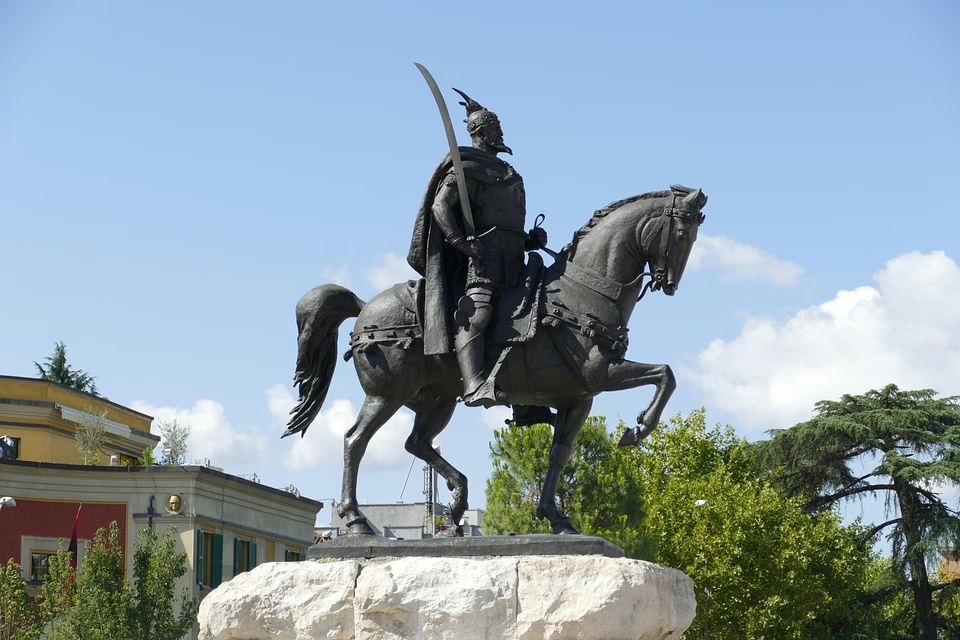Language Evolution and Embryomorphemes: Insights from the Albanian Language
Introduction
The study of language evolution offers a profound understanding of how human communication has developed over millennia. It encompasses a variety of fields, including linguistics, anthropology, and genetics. One particularly fascinating aspect of this evolution involves the concept of “embryomorphemes”—the minimal units of meaning that can provide insight into the developmental stages of language. This article will explore these notions through the lens of the Albanian language, which is rich in historical significance and linguistic diversity.
The Basics of Language Evolution
Language is not static; it evolves. Scholars have traditionally posited that languages develop through several mechanisms: phonetic changes, grammaticalization, and borrowing from other languages, among others. These processes reflect shifts in culture, society, technology, and even biology. The layering of languages and dialects often results in a rich tapestry of linguistic features, and the Albanian language exemplifies this evolution effectively.
Phonetic Changes
Phonetic evolution involves changes in pronunciation over time. For instance, the substitution of certain phonemes can lead to a significant shift in how a language is spoken. In Albanian, numerous phonetic shifts have occurred since its emergence from Proto-Indo-European, including the loss of certain consonantal sounds.
Grammaticalization
Grammaticalization refers to the process by which words develop into grammatical elements, such as particles or affixes. In Albanian, this can be observed in the transformation of certain verbs into auxiliary forms that help denote tense, mood, and other grammatical features.
Borrowing and Influence
Albanian has been influenced by various languages throughout its history, including Latin, Slavic tongues, and Ottoman Turkish. These influences have contributed to the rich vocabulary and syntax found in contemporary Albanian, highlighting the adaptive nature of language.
Understanding Embryomorphemes
The term “embryomorpheme” represents a theoretical framework that seeks to identify the smallest units of meaning that lie at the foundational level of language. This concept allows linguists to examine the germinal structures of language, akin to the embryonic stages of biological development.
Identifying Embryomorphemes in Albanian
Studies have attempted to identify such units within the Albanian language. Interestingly, Albanian maintains a rich morphological system with numerous prefixes, suffixes, and root forms. These morphemes can provide insights into how Albanian has developed over time, leading to the identification of various embryomorphemes.
Implications for Language Evolution
Understanding these embryomorphemes can elucidate not only the evolutionary trajectory of Albanian but also the broader patterns observed across the Indo-European language family. For instance, the evolution of verb forms or noun declensions in Albanian can reflect similar trends in other Indo-European languages, offering a comparative analysis of linguistic evolution.
Historical Context of the Albanian Language
The Albanian language boasts a unique position within the Indo-European family, serving as a bridge between various linguistic branches. It is often divided into two major dialects: Gheg and Tosk, each with distinct phonological and grammatical features.
Origins and Development
Albanian is believed to have evolved from the ancient Illyrian and Thracian languages spoken in the region before the arrival of Slavic and Latin influences. The first recorded documentation of Albanian dates back to the 14th century, although it is likely that the spoken language existed long before this.
Borrowing and Linguistic Diversity
As previously mentioned, the Albanian language has absorbed elements from various languages due to historical interactions. For instance, during the Ottoman period, Turkish lexical items became prominent in Albanian, particularly in urban areas. This borrowing reflects both the sociopolitical dynamics of the region and the adaptability of the language.
Morphological and Syntactic Features of Albanian
Albanian is characterized by a complex morphological system, which is rich in aspects such as noun gender, case, and verb conjugation.
Noun Gender and Case
Albanian nouns can be masculine, feminine, or neuter, with distinct morphological endings. The case system, which includes nominative, accusative, dative, genitive, and ablative forms, adds another layer of complexity. The interaction of these categories can provide valuable insights into the embryomorphemes of the language.
Verbal Conjugation and Tense
Verbal forms in Albanian exhibit significant conjugation patterns for person, number, tense, mood, and aspect. These features reflect an intricate system that shapes not only the meaning but also the syntactic structure of the language. Understanding these conjugation patterns helps identify the foundational morphemes that form the backbone of Albanian verbs.
Embryomorphemes in Syntax
Beyond morphology, embryomorphemes can also be detected within the syntactic structures of Albanian. The arrangement of words in sentences often reflects deeper meanings, highlighting the importance of syntax in understanding language evolution.
Simple and Complex Sentences
In Albanian, simple sentences often consist of a subject-verb-object structure, mirroring many other languages. However, more complex sentences can reveal layers of meaning that stem from the interplay of various morphemes. For instance, the use of subordinate clauses can demonstrate the capacity of Albanian to convey nuanced relationships between ideas.
Adjective-Noun Agreement
The agreement between adjectives and nouns also provides insight into the embryomorphemes at play. In Albanian, adjectives must agree with nouns in both gender and number, a feature that strengthens the morphological connections within the language.
The Role of Embryomorphemes in Language Change
Embryomorphemes serve as a vital mechanism for language change and evolution. They allow language to adapt to new contexts while retaining its core structures.
Language Contact and Change
As cultures interact, their languages often influence one another. Albanian serves as a prime example of how contact with neighboring languages has led to changes in vocabulary and even grammatical structures. The process of evolving through contact is often evident in the embracement of new embryomorphemes, which can reflect social shifts and cultural exchanges.
The Dynamics of Dialectal Variation
Albanian exhibits significant dialectal variation between Gheg and Tosk. The differences in morphology and syntax can provide insights into how language evolves in distinct geographic and social contexts.
Case Studies: Albanian in the Modern Era
The contemporary study of the Albanian language presents opportunities to observe the continued evolution of embryomorphemes within a globalized context.
Influence of English and Globalization
In the era of globalization, the influence of English has permeated various aspects of Albanian life, from media to education. New borrowed terms and expressions can be seen as embryomorphemes that symbolize the evolving nature of the language. Understanding how these elements integrate into the existing structure can shed light on the future trajectory of Albanian.
Digital Linguistic Trends
Social media and digital communication platforms have also impacted language evolution. The abbreviation of words and the formation of neologisms are evident in modern Albanian. These linguistic phenomena can be studied as new embryomorphemes that arise from the need for quick and concise communication in the digital sphere.
Conclusion
The exploration of language evolution and embryomorphemes using the Albanian language as a reference highlights the intricate relationship between culture and linguistics. Through its rich history, complex morphological and syntactic features, and the ongoing influences of globalization, Albanian provides valuable insights into the dynamics of language change.
The ongoing study of embryomorphemes not only enhances our understanding of Albanian but also contributes to a broader comprehension of language evolution as a whole. Whether through the impact of historical contact or modern innovations, the Albanian language serves as a living repository of human communication, continually evolving while retaining its foundational elements.
References
- [Modern Linguistics Source]
- [Language History and Evolution Source]
- [Albanian Morphology Studies Source]
- [Sociolinguistic Perspectives on Albanian Source]
- [Globalization and Language Change Source]
(Note: The reference section is indicative and requires specific modern footnote-style citations corresponding to academic sources in the field of linguistics.)


























Add Comment